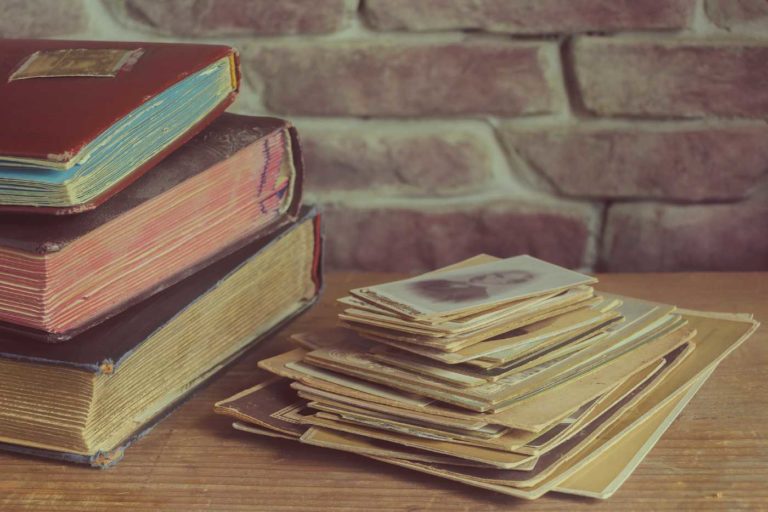It might feel like your family heirlooms are safe in your attic or basement, but is your basement ever damp? Is your attic ever hot? And don’t get us started on dust, bugs, and mold.
Everything deteriorates over time, but the wrong conditions can really speed up the process. The importance of family heirlooms to you and your relatives is typically a main factor when looking into the best storage options – because if something is worth preserving it’s worth preserving properly.
But you may be asking how do I organize family heirlooms and keep them in the best shape for the next generations? We’ve gathered the best tips and tricks and here’s how:
Location, Location, Location
For the reasons we just mentioned, keep heirlooms out of attics and basements. But also keep them away from outside walls and heat sources. This is absolutely the most important thing you can do. If you don’t have enough space in the main parts of your home, consider a climate controlled storage unit.
Storing Paper and Photo Heirlooms
Your great-grandfather’s love letters sent from Europe. Your mother’s christening photos. Your daughter’s kindergarten report card. They’re all worth saving, but what can you do with the old family heirlooms?
If they are something that you can envision placing around your house, that is the best way to keep an eye on them while displaying a piece of family history. Unfortunately, not all family heirlooms will fit into the design of your home. Before you pack them away, however, use your phone to take a quick photo of each item. That way, you’ll know what you have, can share items with family, and have a backup—just in case.
Once that’s done, the next task is to learn the term acid-free and seek out products that guarantee it. But before you start grabbing papers and photos, make sure your hands are clean or, better yet, wear a pair of clean white cotton gloves.
The Library of Congress Photograph Preservation steps, it is suggested to:
- Not marking photographs, even on the back side
- Not using paperclips, rubber bands of any kind of tape to organize photos or papers
- Store all photos flat in acid-free envelopes or albums that are then placed in acid-free plastic archival storage boxes (separately from negatives).
One of the most important steps in the storing process is to make sure whatever type of box you decide to store them in, moisture stays out. Keeping moisture out of boxes prevents further aging and deterioration of your heirlooms.
Storing Family Heirlooms Made of Fabric
Whether it’s a treasured quilt or a military uniform, there are some garments or items made of fabric that are definitely worth keeping.
If the item is new—say a wedding dress—the first step is to have it professionally cleaned by a specialist (not all dry cleaners have the skills to tackle the job.)
Once that’s done, the dress should be wrapped in acid-free paper and stored in an acid-free box (never hung in your closet in a plastic bag).
If you’re storing antique clothing, however, your best bet is to avoid cleaning it. Instead, store in acid-free paper in an acid-free box.
Whether your garment is new or old, don’t use mothballs, which are both toxic and ineffective. Instead, textile conservators recommend making sure that the acid free box you use does not have a plastic window as it can be punctured over time. Also, store the box in a clean closet with a stable temperature, not an attic or basement, and make sure you clean the area occasionally. If you don’t have space or the proper closet to store these items, a climate controlled storage unit is a great option.
Storing Antiques and Other Delicate Family Heirlooms
In addition to avoiding attics and basements, there are a few steps you can take to keep your antiques in shape.
Before you store wood pieces they should be conditioned—and not with a shiny product like Pledge. Instead, use a wax specially designed for wood furniture (if in doubt, ask a local antiques expert about his or her suggestion for your specific piece.)
When stored, furniture should be kept away from exterior walls and heat sources and it should never be stacked, which places stress on the joints and can mar the finish.
Sometimes, You Just Need More Space
Storing family heirlooms wouldn’t be so hard if we could just stick them in basements or attics, but most of us are short on closet space in the main living areas of our home—which is where they should be kept.
If you need a little extra room, consider renting a climate-controlled self storage unit. At StorageMart, we offer affordable self storage units that range from about the size of a closet to the size of a garage—or even bigger. They can be rented on a month-by-month basis and are always clean and well lit.
Check out our Self Storage Calculator or rent a unit online today. While it’s certainly true that some of the things we keep are better off donated or discarded, there are some remarkable heirlooms that deserve the chance—and the proper storage needed—to be appreciated by the next generation.


